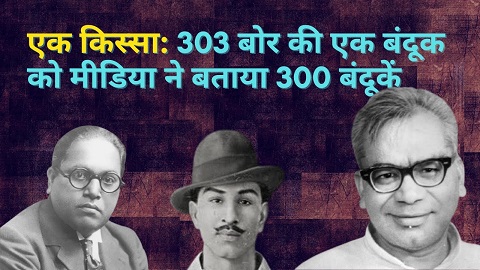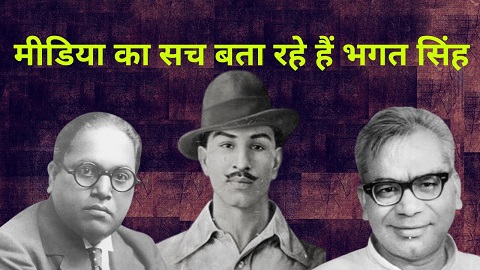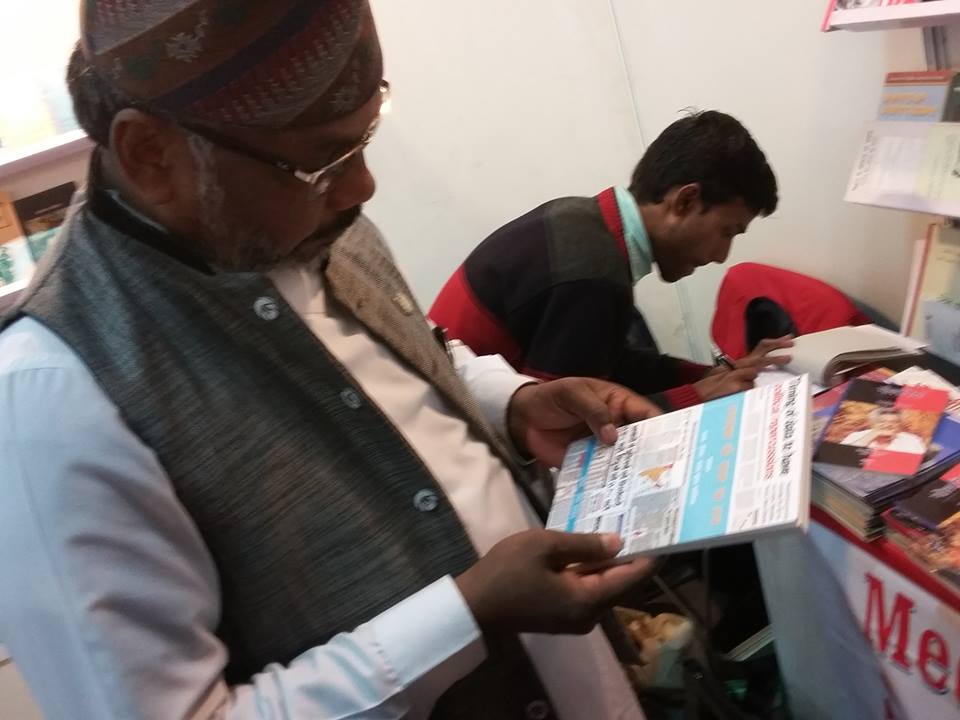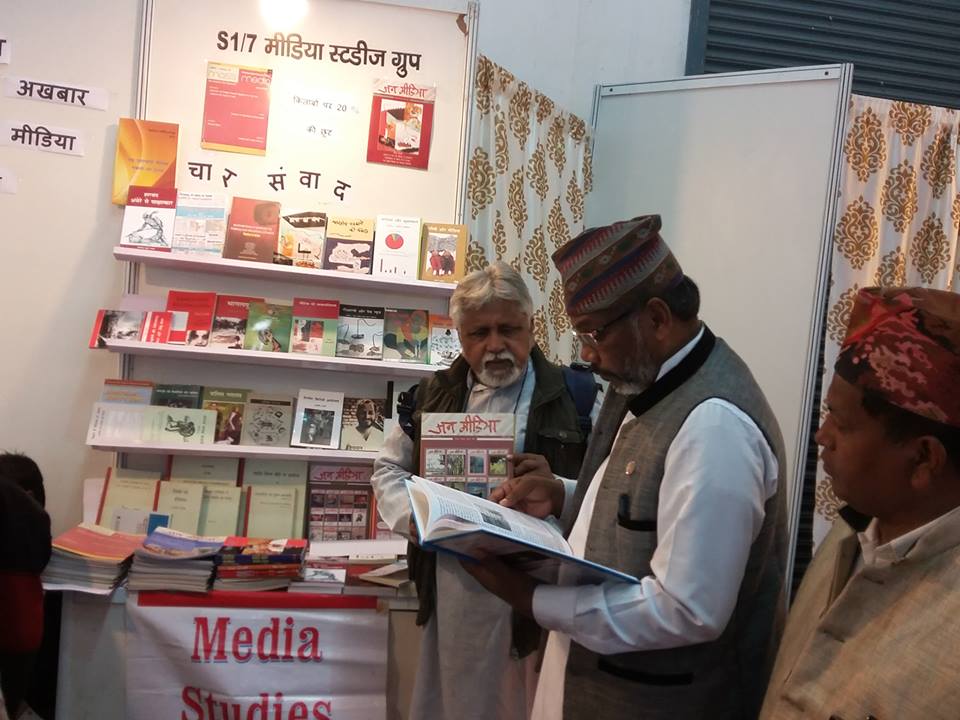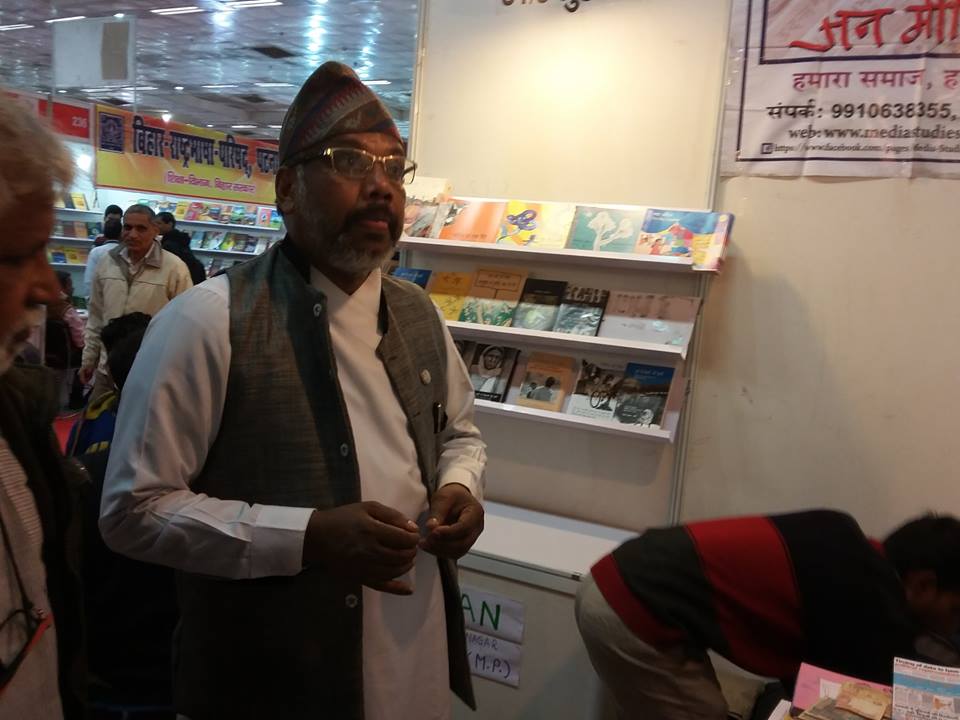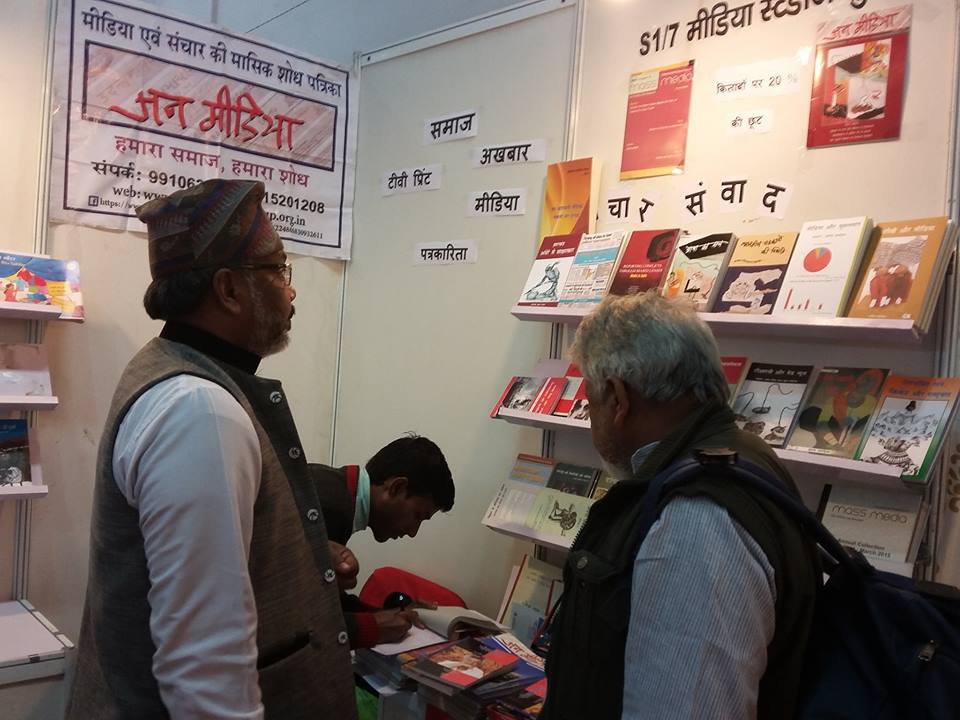Jyoti Prakash Mohapatra,
Faculty,
Journalism and Mass Communication,
Odisha State Open University, Sambalpur.
Mail ID- jp.mohapatra@osou.ac.in
Cell- 09437080048
Abstract
Public Service Broadcasting as an ethical standard has for long been considered the ideal in
Broadcasting. And with the present proliferation of technology in the field of mass
communication, a renewed look at PSB is sought for. This article traces the development,
roles, challenges and possibilities of PSB in India in the form of establishment of Prasar
Bharti, its role in social and cultural development, challenges from autonomy and
commercialization and the possibility of outreach respectively. Also included is a look at
various policy recommendations made on behalf of the Indian Government as they have
formed the base for the development of Prasar Bharti, which is the sole broadcaster with
elements of PSB.
1. Introduction
Broadcasting essentially means the transmission of information over airwaves and the
character of this information helps in the classification of the broadcast. Here we are
primarily concerned with broadcast of information through Radio and Television sets meant
for consumption by the public, which is broadcasting as an instrument of mass
communication.
The earliest known broadcast through radio was done by Charles Herrold in April 1909 from
San Jose, California. With the subsequent development of technology its assertiveness as an
instrument of mass communication started becoming evident. This possibility made it
imperative for countries to devise laws and regulations for its usage, as it was concerned with
the masses – who in themselves were the subjects of their governments. As is noted in an
internal confidential report from February 25, 1924 in which the Imperial Wireless
Telegraphy Committee stated (Wikipedia.org 2013 ):
"We have been asked 'to consider and advise on the policy to be adopted as regards
the Imperial Wireless Services so as to protect and facilitate public interest.' It was
impressed upon us that the question was urgent,”
British Broadcast Company, established in 1922, was the first institution which used the air
waves for experimental transmissions, these transmissions included programs sponsored by
newspapers. But in 1926, the British government in accordance with the recommendation of
Crawford Committee, annulled the British Broadcast Company Ltd and set up the non-
commercial British Broadcasting Corporation. Apart from the creation of a public
corporation, which would serve as a trustee for the national interest in broadcasting, the
recommendations said: “…it was expected that as public trustee, the corporation would
emphasise serious, educational and cultural programming that would elevate the level of
intellectual and artistic tastes of the audience”. On 20 th December 1926 the Crown Charter
proclaiming the establishment of the world’s first public broadcaster were published
(Wikipedia.org, 2013). Public Service Broadcasting, as a term, originated after the
establishment of the aforementioned British Broadcasting Corporation.
The generally accepted definition of Public Service Broadcasting is the eight principles
outlined by Michael Tracey (1998):-
(1) Universality of availability.
(2) Universality of appeal.
(3) Provision for minorities, especially those disadvantaged by physical or social
circumstances.
(4) Serving the public sphere.
(5) A commitment to the education of the public.
(6) Public broadcasting should be distanced from all vested interests.
(7) Broadcasting should be structured as to encourage competition in good programming
rather than competition for numbers.
(8) The values of broadcasting should liberate rather than restrict the programme-makers.
The above outlines do not explicitly mention the absence commercial or governmental
control, in ways financial and administrative. But this can be inferred from (6) which says,
“Public broadcasting should be distanced from all vested interests” as both political control
and commercial control will bring in accountability to the sponsoring body thereby control
over content. Public Service Broadcasting content is concentrated towards what the public
ought to be given and not public needs. This concept will be discussed further later in the
essay when we talk about commercialization.
2. Public Service Broadcasting?
Apart from what principles public service broadcasting should be based upon, the importance
of PSB has been thoroughly defined and redefined through varying conferences and
summits:-
“Public service broadcasting (PSB) has an important role to play in providing access
to and participation in public life. Especially in developing countries, PSB can be
instrumental in promoting access to education and culture, developing knowledge,
and fostering interactions among citizens. For the majority of the world population,
comprising inhabitants of huge rural areas and illiterate people, radio and television
remain the most available and widespread ICTs, with radio in the first place as
primary communication medium,” (Banerjee and Sevaniratne, 2005)
And when we talk about the control of Public Service Broadcasting the following observation
summarizes the need for arms-length distance from both commercial and governmental
interests.
“Neither commercial nor State-controlled, public broadcasting’s only raison d’être is
public service. It is the public’s broadcasting organization; it speaks to everyone as a
citizen. Public broadcasters encourage access to and participation in public life. They
develop knowledge, broaden horizons and enable people to better understand
themselves by better understanding the world and others. Public broadcasting is
defined as a meeting place where all citizens are welcome and considered equals. It is
an information and education tool, accessible to all and meant for all, whatever their
social or economic status. Its mandate is not restricted to information and cultural
development— public broadcasting must also appeal to the imagination, and
entertain. But it does so with a concern for quality that distinguishes it from
commercial broadcasting. (ibid)
This definition though leaves few stones unturned that of the linguistic barrier encountered
when the word public is used. The word ‘public’ is generally construed as something
referring to ‘the Government’ or ‘entities related to the government’. Though it is true that
when the world is administered through representation by someone or some-people for
everyone, take any form of government as an example, ‘public’ as a word would invoke the
idea of the government. This kind of notion makes ‘public service’ directly related to what
the government thinks fit for the public. Such service can be done by anyone but it should
ultimately be in the domain of what the government thinks fit for the public. The problem
arises when in a diverse culture what should be fit for the diversity in itself assumes diverse.
But this linguistic problem is not the biggest hurdle that Public Service Broadcasting faces,
by virtue of the way it is defined. The major problem that PSB faces is the autonomy it is
ceded from those who are in control. Also with globalization PSB has also fallen prey to
competition from commercial broadcasters. The latter uses homogenization of content to
appeal to a larger audience, but in the way compromise diversity in content.
3. The Indian Scenario
India is a diverse country with 22 official and 216 native languages scattered over a
population of 1.2 billion. In such a vast country mass communication itself becomes a
challenge. In this section we outline the history from its antecedents, to recommendation and
then to the present situation.
3.1 Antecedents
Broadcasting in India started in November 1923 from the Radio Club in Calcutta. Similar
amateur broadcasting networks, which were established by Indian Broadcasting Company,
sprung up Bombay and Madras. But the expenditure of these setups far exceeded their
revenue, which was derived from two sources:-
1. It received 80 % of its revenues from radio licences. The fee was fixed by the government
at ten rupees per radio set per annum. The company had to collect the revenue from those
who possessed the receivers.
2. 10% tribute on the invoiced value of imported wireless equipment such as receivers,
wireless valves, electric wireless gramophones, which the company had to collect itself from
the dealers.
Due to dwindling licenses the company went into liquidation in June 1930. The revenue
model described above resembles that which is used for funding Public service Broadcasting
Services. Though people contended that the programs aired by the IBC catered to the small
European community and westernized Indians there some lobbying from the leaders of
political parties in the central assembly, who urged that the service should be continued
without interruption. (P C Chatterjee, 1991)
Henceforth, detailed proposal were drawn out to acquire and run broadcasting stations and in
early 1930s broadcasting came under the direct control of the government in the Department
of labour and Industries and the Indian Broadcasting Company was renamed as The Indian
State Broadcasting Service.
In 1935 the designation of Indian State Broadcasting Service was changed to All India Radio
which was in 1941 transferred to the Department of Communication which after India’s
independence became a Ministry.
When India was partitioned the AIR network consisted of six stations and five in princely
states. The total number of licenses was 2,48,000 in a population of 35 crore. Subsequently in
1951, with the commitment of the country to centralised planning, AIR’s expansion has been
included in the government’s Five Year Plans.
3.2 Policies regarding PSB
This move cemented AIR’s position as a part of the Government for then and for posterity as
till now AIR and Doordarshan are firmly in the control of the Central Government with little
autonomy being ceded to it. But in the past 66 years several committees and working groups
were established to look into the issues related to broadcasting. The most important of which
are briefly discussed below along with their recommendations:-
1. The Chanda Enquiry Committee 1966 – This committee was setup after Indira Gandhi
became the Cabinet Minister of Information and Broadcasting. The committee was
headed by A.K. Chanda, former Auditor General of India. It suggested that AIR be
converted into a corporation run by a Board of Governors on the BBC Model; that
television be separated from radio and given a twenty year development plan; and that
Vividh Bharti channel be commercialized and its profits ploughed back into radio for
the improvement of the programmes. The latter two recommendations were accepted
but the foremost was rejected. Such financial relation between VIvidh Bharti and All
India Radio, could have been used to make AIR to become more oriented towards the
PSB model.
2. The Verghese Working Group 1978 – Set up under the Janata government, the
working group was to look into the possibility of granting AIR and Doordarshan
complete autonomy. It recommended that AIR and Doordarshan should function
under a single trust, the autonomy of which would be entrenched in the constitution
itself. The trust would have decentralized administration for better state and regional
level functioning. It also proposed that the Trust should have powers to license
educational institutions to run ‘franchise stations’. This would ensure diversity of
content and the broadcasting education specific programmes.
But the subsequent bill which was introduced into the parliament rejected the concept
of forming a trust and giving it constitutional autonomy. And as far as giving financial
autonomy was considered the government did no better and kept control with itself.
Also ‘Franchise Stations’, which was a genuine attempt towards Public Service
Broadcasting found no place in the bill, which was called the Prasar Bharti Bill.
3. Joshi Working Group 1983 – This group was headed by Dr. PC Joshi, Director of
Institute of Economic Growth, Delhi and had thirteen members. Its mandate was to
‘prepare a software plan taking into consideration the main objectives of television of
assisting in the process of social and economic development of the country and to act
as an effective medium for providing information, education and entertainment.’ The
report pressed on the need to decentralize the television system and to give top
priority to providing community sets in Indian villages for which adequate funds are
earmarked.
In order to restore Doordarshan’s original purpose of promoting social education and
development the report recommends that each transmitter network be equipped with
studios and facilities to produce programmes in regional languages and that adequate
funds should be provided and personnel should be posted at each Kendra to discharge
these functions. It also recommended that at least 50 per cent of Doordarshan’s
programme time should be given over to programmes which are socio-educational..
This report takes recommends concrete steps towards the decentralization of
Doordarshan. It envisaged television to be a vehicle of development and
recommended such steps which would make the Indian village the primary subject.
4. Prasar Bharti Act, 1990 – This act was passed by the parliament in 1990 and its aim
was to set up a Broadcasting corporation for India, called Prasar Bharti, which would
encompass both Akashvani and Doordarshan. And to define its composition,
functions and powers. This act came into force on 15 th September 1997. According to
the act the Prasar Bharti board was to consist of 15 members of which 2 were ex-
officio members and 1 was the political representative nominated from the Union
Ministry of Information and Broadcasting. Though the remaining members were to be
from public domain, they were to nominated by the president on recommendation of
Chairman of the Council of States and the Press Council of India(Which have in
effect an inherent political character by virtue of their mode of appointment). Clause
12, 2 of the act lists 16 functions of the corporations which broadly resemble the
functions of a Public Service Broadcaster. Those deemed important are listed below:-
1. 12,2(c) obliges the broadcaster to pay special attention to education and
spreading literacy agriculture, rural development, environment, health and
family welfare and science and technology.
2. 12,2(j) serving the rural and weaker sections of the people and those residing
in border regions, backward or remote areas.
3. 12,2(k) providing suitable programmes keeping in view the special needs of
the minorities and tribal communities.
4. 12,2(m) promoting national integration by broadcasting in a manner that
facilitates communication in the languages in India; and facilitating the
distribution of regional broadcasting services in every State in the languages of
that State.
But there is further political influence on broadcasting in the act, as is suggested in clause 13
which seeks to establish a parliamentary committee, which would oversee the functioning of
the Corporation and submit reports to the parliament. The said corporation was to be funded
by the central government in accordance with clause 17 which says the Central Government
may, after due appropriation made by Parliament by law in this behalf, pay to the Corporation
in each financial year, proceeds from broadcast receiver license fees and grants-in-aid and
loans, by way of equity.Apart from central funding the corporation can have its own funds
which it generates from various means.
But the primary danger to autonomy from government control of the envisaged corporation
comes from clause 23 listed in the miscellaneous section of the act which empowers the
Central Government to issue directions to the corporation as it may think necessary in the
interests of the sovereignty, unity and integrity of India or the security of the State or
preservation of public order requiring it not to make a broadcast on a matter specified in the
direction or to make a broadcast on any matter of public importance specified in the direction.
And in situations in which the sovereignty, unity and integrity of India means the longevity of
the Political party in office such control could jeopardize the functions listed under 12,2 of
the act. A few years a bill was tabled in the parliament titled THE PRASAR BHARATI
(BROADCASTING CORPORATION OF INDIA) AMENDMENT BILL, 2010 which aimed
at only administrative amendments and nothing more.
In spite of all this it must be mentioned that in Doordarshan and AIR through their
decentralized system have done a commendable job in introducing programmes which work
towards educating and enriching the masses. Programmes like Tarang, Krishi Darshan and
Yuva Bani are case in points
Though Prasar Bharti in its administrative architecture is far from what a Public Service
Broadcaster should be, its programming does have certain elements PSB.
3.3 The Present Situation
3.3.1 Television
A FICCI KPMG report claims that by 2017 Cable and Satellite television viewership in India
will grow to 173 million, representing 91 percent of TV households. This report excludes
DD’s free Direct-to-Home platform DD Direct.
DTH service which presently caters to 44 million subscribers is expected grow to 90 million
subscribers by 2017, thereby becoming the biggest platform. (The power of a billion, 2013)
As regards to Public Service Broadcasting this fact is important because in comparison to
digital cable satellite cable gives the consumer access to multitudes of channel on a demand
basis. Also it is to be observed that these channels are available in the form of packages
though it is criticized that private players garner profit by making different channel packages
for different genres.
But it is not the packaging of channels which is of concern; it is the possibility of easier
outreach to distant places which is to be looked at.
Satellite television can be used to provide broadcasting service to people in rural areas. An
example to be cited is DD Direct, which is a Direct to Home service started by Prasar Bharti.
Also known as, Free Dish, it has about 9 million subscribers and its free-to-air service covers
81% of India’s geographical area via 1415 transmitters. It currently offers around 60
television channels and 25 radio stations. The channels include 27 private and 6 international
channels apart from all regional and national television and radio channels of Prasar Bharti.
The technical advantage with DD Direct is that it uses Ku-Band on the INSAT-4B. This gives
it the ability to have pan-India coverage and is the reason why the slots on DD Direct are
much sought after by private players.
This technical advantage is only compromised by its penetration which is far less in
comparison to other Satellite providers, which stands at 44 Million. These private
broadcasters do not have an obligation of providing channels with content pertaining to
‘Public Service’.
3.3.2 Radio
There are 245 private FM stations in India operating from 86 cities which have a Combined
Annual Growth Rate of 14 percent. According to IRS 2012 Q2 data, radio had an estimated
audience of 158 million people (out of which FM radio accounts for 106 million).
( FM Radio: Facing challenges, embracing growth , 2012)
As far as AM is considered there are 48 Short Wave and 144 Medium Wave stations and that
belong AIR apart from which there is BBC India broadcasts its programmes on Short Wave.
All India Radio has spate of programmes aimed at regional and national audiences which are
broadcasted through Medium and Short Wave respectively.
In Delhi, there are 10 FM mainstream broadcasters, of which one channel belongs to the AIR,
called AIR FM Rainbow. All these channels broadcast commercial content. The legislation
which would allow them broadcast news has not yet been properly formulated. News is only
available on an hourly basis on the FM channel which belongs to AIR. On the national level
AIR has 382 FM radio stations of which 86 are Local Stations which broadcast programmes
which serve small communities, showcase local culture and broadcast area specific
programmes for the benefit of the community.
The penetration of radio in the form of PSB is limited to programmes broadcasted by All
India Radio apart from which there are 148 working Community Stations in India which also
include Institute Radio Stations or ‘Franchise Radio Stations’ which serve very limited
audiences.
AIR claims that it reaches 92% of the country’s area and 99.19 % of the total population with
programmes in 23 languages and 146 dialects (All India Radio, 2013). The reach is calculated
by using transmitter range and the population in the given range. Though this is a remarkable
fact, the question that is needed to be asked is that of the content. To say that AIR is
successfully fulfilling its mandate as a Public Service Broadcaster would be a tall claim
because of the overriding governmental control.
3.3.3 Public Service Broadcasting Trust
This organization deserves a mention because it is the only organization in India which
closest to being a Public Service Broadcaster. Public Service Broadcasting Trust works in the
domain of cinemas. It is a non-governmental not-for-profit trust which gives film fellowships
to filmmakers from across the country. It is operates in partnership with the Films Division
(MoI&B), Doordarshan and several other international organizations. Though Doordarshan
meets half of its production costs and also provides air time, the autonomy of programming
content is commendable. Trustees of this organization include Adoor Gopalakrishnan, Mrinal
Sen and Shyam Benegal among others, which has helped it maintain a high standard of
quality.
4. PSB in Britain – A brief look
Britain warrants a mention in every study of Public Service Broadcasting because that is
where the term took birth and incidentally it has more or less lived up to its ideal of Public
Service. The history of PSB in Britain has already been mentioned therefore we will straight
away get to details about its functioning. The White Paper introduced in 2006 as a precursor
to the new Charter which perpetuates the establishment of BBC lists six purposes for the
corporation: –
1. Sustaining citizenship and civil society;
2. Promoting education and learning;
3. Stimulating creativity and cultural excellence by using the licence fee as venture capital
for creativity;
4. Representing the UK, its nations and regions;
5. Bringing the UK to the world and the world to the UK;
6. Building digital Britain.
Every activity that BBC undertakes must aim at meeting one or more of these purposes. (A
public service for all: the BBC in the digital age, 2006)
BBC is funded through the following routes:-
1. Through the collection of license fee levied on everyone who has a connection. The fee is
collected through the Post Office. (The evasion of license fee is punishable with
imprisonment.)
2. Commercial earnings through sale of air time to advertisers and by running commercial
services. This earning is used to return extra value through programming for the license
fee payers. This is similar to what was suggested by the Verghese Working Group in
1978.
But what made the BBC maintain high standards of programming and independence with the
remit of Public Service Broadcasting? Stephen Hearst in his article Broadcasting regulation in
Britain says “There is, in truth, a subtle relationship which depends more on the BBC’s
Governors wise exercise of their temporary authority and on Ministers restraint than on the
precise letters of agreements that are in force”. This implicitly means that the functioning of a
Public Service Broadcaster in accordance to its principles is realistically possible if those at
positions of power are willing (Hearst, 1992).
5. Issues with Public Service Broadcasting
5.1 Autonomy
The autonomy regarding content has been a question of its constitutionality. Even in the
Verghese Working Group Report the recommended Trust was to be given autonomy
guaranteed by an amendment to the constitution. But it is worth pondering whether this
autonomy falls within the purview of our Fundamental Rights. Article 19, 1(a) of the
constitution guarantees freedom of thought and expression though with caveat clauses. This
is the right under which the Press guards its freedom. Broadcasting as a defined therefore can
also be included within its ambit, as it is also a form of expression. Looking at it from the
other side it should be right of every individual to have access to varying opinions. This has
not yet taken place in case of Broadcasting as in the case of Press because not much litigation
has taken place regarding the issue. Also the government has never ventured to draft a policy
for broadcasting in India whereas the Press, through a sea of judicial rulings have a cemented
notion of Press Freedom. Take for example the following excerpt from the Supreme Court
ruling in The Indian Express vs Union of India (AIR 1986 SC 515):-
Freedom of press is the heart of social and political intercourse. The press has now
assumed the role of the public educator making formal and non-formal education possible
in a large scale particularly in the developing world, where television and other kinds of
modern communication are not still available for all sections of society. The purpose of
the press is to advance the public interest by publishing facts and opinions without which
a democratic electorate [Government] cannot make responsible judgments. Newspapers
being purveyors of news and views having a bearing on public administration very often
carry material which would not be palatable to Governments and other authorities.
These rulings form the bedrock in the argument for press freedom in a democracy, of which it
is the fourth foundation pillar. Unfortunately broadcasting never came into this picture
because in India private entities had not ventured into Radio and Television in its nascent
stage. AIR and Doordarshan were the sole broadcasters and were owned by the government.
Which even after numerous recommendations; did not cede the autonomy requisite for being
Public Service Broadcaster.
5.2 Commercialization
With the onset of commercialization of air space many radio stations and television channels
have cropped up whose programming motive is centred round Television Rating Points. Also
they operate in a profit-maximizing structure. These channels bank on homogeneity of
content which is expected to have mass appeal and hence larger viewer base. An argument
may be that is there is mass viewing then that is what the public requires, but in an
environment where the viewer is at the receiving end and has practically no say in the content
creation the above argument proves shallow. It is somehow a vicious circle, that at one end
the suppliers are choosing the content and then reviewing the public in what they find best
out of whatever is being provided, and then defending the perpetuation of such a program on
the basis that it is well received by the masses. This kind of programming does not help in
educating or enlightening the viewers. Though it should not be concluded that television for
masses and television of quality are mutually exclusive examples are shows like Satyamev
Jayate.
In such an environment Public Service Broadcasters witness dwindling viewership. It may be
that homogenous content appeals more to the viewers but it may not be socially or culturally
enriching.
As is noted by Blumler (1992):-
Even when there is no linguistic difference, the need for commercial broadcasters to
attract audiences of a sufficient size also limits their preparedness to serve regional
audiences or sub-groups. Guarantees of this kind apply primarily to public
broadcasting. Commercial broadcasters are inevitably circumscribed by their need to
address commercially-viable audiences, though they can be reached through satellite
or cable.
Commercialization in broadcasting has an upside also, in that it creates competition. This
competition is beneficial for the public because it gets the option of choosing what is best for
it. Here in comes the role of the commercial wing of the public broadcaster. This commercial
wing if existent can function in a manner in which it satisfies audience requirements created
through their exposure to such programmes which do not fall under the umbrella of a Public
Service Broadcast. This leaves the organization to broadcast programmes through their
separate PSB channels, of such remit as can be considered a Public Service Broadcast.
Another aspect of commercialization is that the channels generate their primary revenue
through advertising. This implies that shows aired are interspersed with advertisements and
controlling the content of advertisements is difficult and their presence makes the audience
susceptible to them which leads to the dilution of the overall effect of the programme.
6. Conclusion
The way Public Service Broadcasting has been taken up in the country leaves room for much
improvement in the spheres of Content and Control. Though the third sphere of financing
does influence the broadcast it should not be considered the biggest impediment, this is said
citing the example of PSBT.
In the 21 st Century with technology capable of taking information to the remotest part of the
country the debate of Public Service Broadcasting becomes a necessity. If we are to develop
as a democratic nation we should make renewed efforts at making the concept viable.
As we have seen India has to bank on its sole Public Broadcaster, Prasar Bharti, for these
purposes and though it has the advantage of reach it is plagued by issues of autonomy from
government control. On the other side there are private broadcasters who have commercial
disposition towards programming with elements of Public Service Broadcasting here and
there.
To forward an idea of a completely independent organization which chooses its content in the
best interests of the public and is neither controlled nor financed by the government would be
a utopian conception which would not be practically viable in today.
Thus what is needed is an organization which is established with a mandate of Public Service
Broadcasting in partnership with the government. Government’s role will similar to that
which it plays in PSBT, of making available its reach to the corporation and giving it
autonomy with regard to content. Also such an organization would eliminate the monopoly
of the government over Public Service Broadcasting. Such an organization which is
representative of the people will help them in their right to free and fair information.
References
1. A public service for all: the BBC in the digital age (2006)
2. All India Radio: http://allindiaradio.gov.in/Profile/Factss%20at%20Glance/Pages/default.aspx
3. British Broadcasting Corporation: http://en.wikipedia.org/wiki/BBC
4. Banerjee, Indrajit and Seneviratne, Kalinga (2005): Public Service Broadcasting: A
Best Practices Sourcebook (2005), UNESCO
5. Blumler, Jay G. (1992): Television and Public Interest – Vulnerable Values in West
European Broadcasting, Sage Publication.
6. Chatterjee, P C (1992): Broadcasting in India, Second Edition (New Delhi: Sage
Publication)
7. Chatterjee Mrinal, India News Today: NHRC to the rescue of victims
8. FM Radio: Facing challenges, embracing growth : www.mxmindia.com/…/fm-radio-facing-
challenges-embracing-growth/
9. Hearst, Stephen (1992): Broadcasting regulations in Britain.
10. Radio – http://en.wikipedia.org/wiki/Radio
11. Tracey, M (1998): The Decline and Fall of Public Service Broadcasting (New York:
Oxford University Press).
12. The Prasar Bharati (Broadcasting Corporation of India) Act, 1990
13. The power of a billion: Realizing the Indian Dream FICCI-KOMG India Media and
Entertainment Industry Report 2013
14. The Indian Express vs. Union of India 1986 AIR 515:
http://www.indiankanoon.org/doc/223504/


